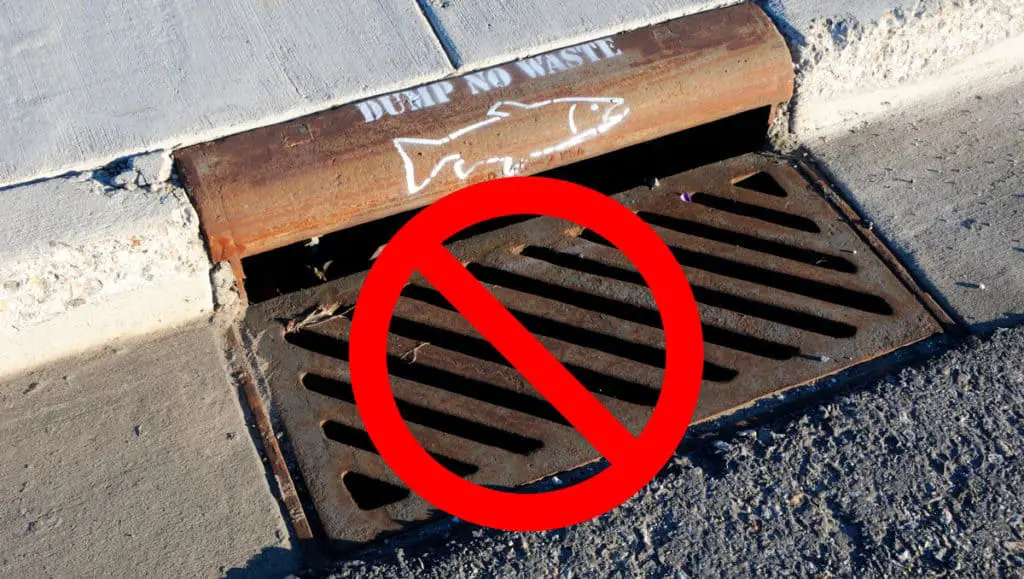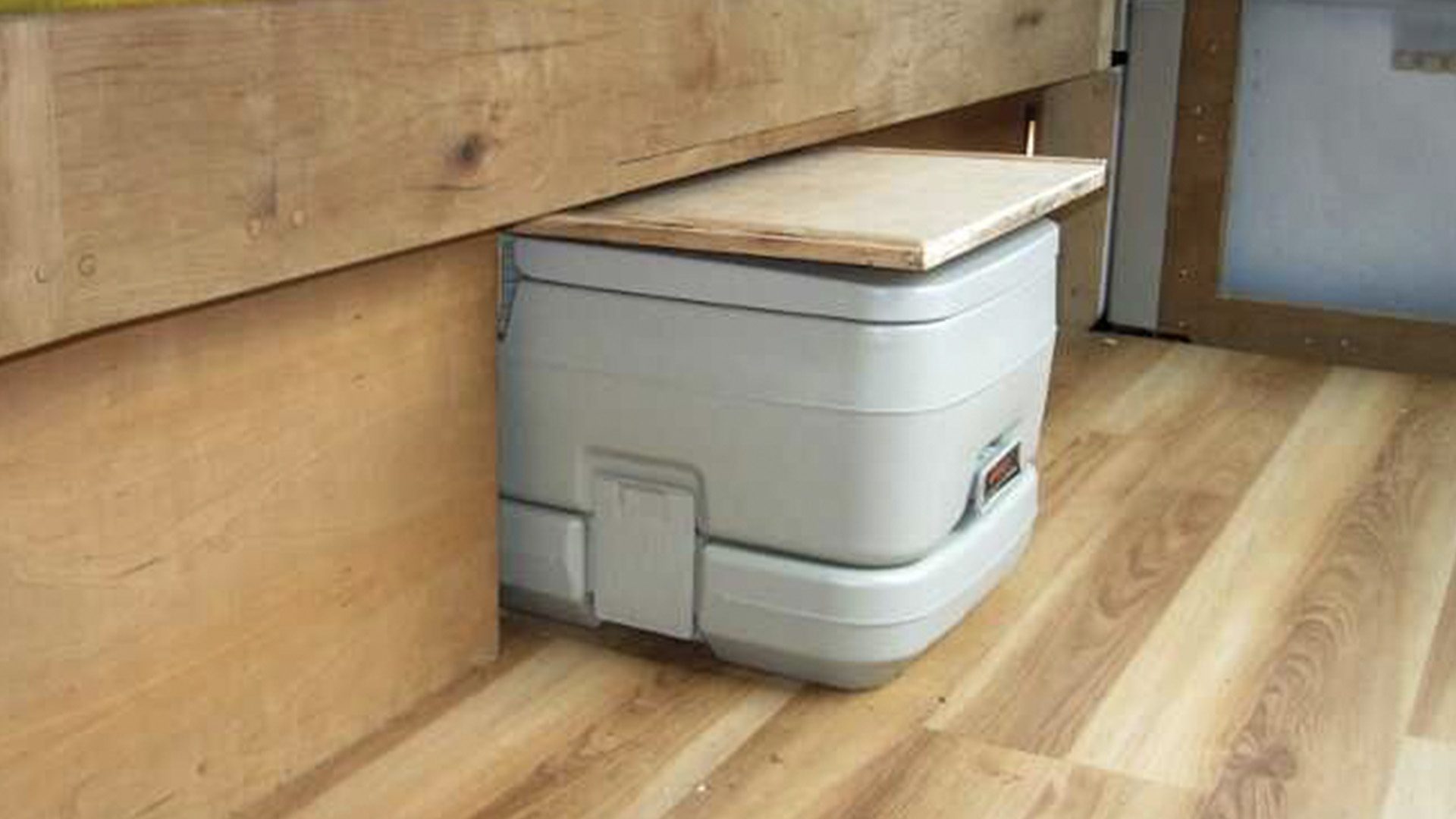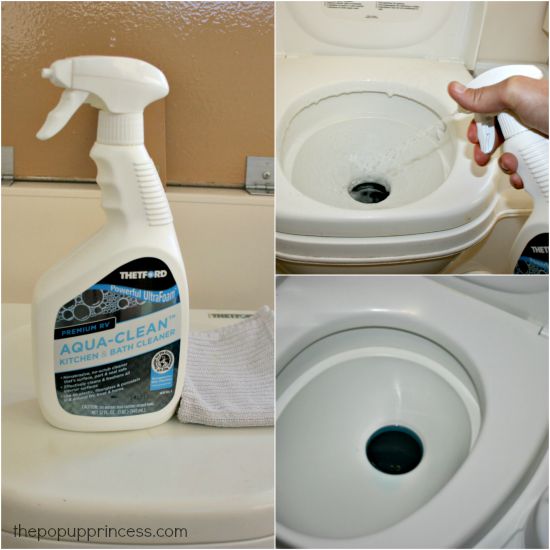The emptying of campervan toilets sounds like an unenviable task, but it’s not that bad if done correctly. While there are plenty of places you can do this, some locations are much more convenient than others.
Often the most convenient location for emptying campervan toilets is a dumping station typically found outside a camp or RV park. If you don’t have access to a dump station, you can also find disposal sites at truck stops, public rest stops, and RV dealerships.
If you are camping remotely, you may be able to access an outdoor toilet or vault toilet. Otherwise, some dispersed camping zones provide specific instructions on how to construct a proper outdoor latrine. Continue below for some helpful tips and strategies.
Where Do I Empty My Campervan Toilet?
Owing to the popularity of camping and RVing, there are many established facilities where you can responsibly dispose of the waste from your Campervan toilet. Whatever you do, make sure that you are using a facility that is specifically designed to handle the waste. If you find yourself in a remote area, there are steps that you must take to responsibly dispose of waste, discussed in further detail below.
Never Dump Anything into A Storm Drain

Never dump anything into a storm or sewer drain that is part of a municipal wastewater system. Some of these drains are nothing more than simple storm drains designed only for rainwater runoff, while others are designated sewer lines. Either way, there are penalties associated with illegally dumping waste into municipal drains, even if you think that you are not dumping very much.
In the sections below, you will see that there are many facilities where you can legally and safely empty campervan toilets, including solutions for those who enjoy backcountry camping, where you may not readily have access to a dump station.
If You Are Staying At A Campground
Most RV parks and campgrounds, public and private, have dumping stations on-site. These waste disposal locations generally exist as an offshoot of the road into the campground and are difficult to miss.
One nice little perk of campground dumping stations is the existence of a water hose to clean out tanks and toilets. The stream of water will typically be pressurized, making for an easy clean.
Even if you are backcountry camping for a few days, you might consider stopping by a public campground to take advantage of these facilities. Be mindful of campground rules, as there may be restrictions only allowing paying customers to use these facilities.
How to Find Campervan Dump Stations
If you are planning a trip that doesn’t involve staying at modernized facilities, you should take stock of potential waste disposal stations that can be found along your route:
- Public Parks with Campgrounds: Look through government park agency websites for campgrounds along your route. Any state, national, or county park allowing campers is also likely to have a proper waste disposal facility.
- Private RV Parks: There are also online directories of RV parks, which can also be found by simply typing “RV park” into your maps app and panning over the area you plan on traveling across.
- Call Local RV Parks: When in doubt, contact representatives from parks and campgrounds to confirm that they have camper dump stations on site.
- Truck Stops: Many truck stops have dump stations on-site for RVs and campers where you can also find potable water sources. You may have to pay a fee to access these services, unlike public campgrounds where dump stations are usually free.
- Rest Stops: Depending upon which state or province you are driving through, you may be able to find a dump station at a public rest stop operated by the local department of transportation.
- RV Dealership: If you pass by an RV dealership while you are out on the road, you might consider asking them if you can use an on-site dumping station. They charge you a fee to use such services.
Dumping into Vault or Pit Toilets
Some campgrounds do not have dumping stations. One perk of having a campervan is the fact that you will have access to rustic campgrounds that many RVs and campers won’t, because these rustic campgrounds don’t have electricity hook-ups. The downside is that these rustic campgrounds also don’t usually have designated dumping stations.
One thing that rustic campgrounds do typically have is a vault (also called pit) toilet or an outdoor toilet. It would be easiest just to use the vault toilet, but sometimes these facilities are not routinely maintained, especially if they are in remote areas. In this case, it is understandable that you would want to use your portable toilet.
When it comes time to emptying your Campervan toilet, the most convenient place for you to dump the waste will be the vault toilet. This is acceptable, as long as you also rinse the toilet out over the vault toilet and not in a nearby stream or body of water. For rinsing purposes, a small tank and manual pump like this one may come in handy.
If You Are Camping In A Remote Area

If you are camping in a remote area, you may not have access to a waste disposal facility. In this case, it is best to use your Campervan toilet with limited frequency and try to conserve the amount of water you are using during the flushing process.
Here are some tips for handling waste when backcountry camping:
- Try to conserve the use of the toilet as much as you can.
- Use as little water as is practical during the flushing process.
- Consider purchasing a second toilet cassette as a back-up, if you are using a toilet cassette system.
- If you are on or near public land, there is a chance that there may be vault toilets nearby. Consult with park agency maps for outdoor toilet locations.
What about the odor? Understandably, the odor may be a concern if you are going more than a couple of days without being able to empty the toilet cassette. Generally, the odor is not a major concern if the cassette toilet is being handled properly. If the odor does become a problem, it may be best to store a full cassette outside of the van. (Just don’t forget it when you leave!)
What Do You Do If You Don’t Have Access To A Dump Station?
Those who do quite a bit of camping in primitive areas may be familiar with foldable toilets like this one. With these, you can set up an outdoor privacy tent outside your van. This type of set-up can be appealing to campers who visit unimproved and primitive camping areas, such as the dispersed camping zones that the US Forest Service operates. If you are engaged in this type of primitive camping, you may not have access to a dumping facility.
The US Forest Service recognizes that backcountry campers may have no other choice than to dig a hole, and as such, provides guidelines on exactly how this should be done:
- Ensure that you are at least 100 feet from any water source.
- Dig a hole that is at least 6-8 inches deep for one trip to the bathroom. To dispose of waste from a full or nearly-full cassette toilet, you will need to dig a longer and wider hole, but not a deeper one. This is because waste takes longer to decompose when it is buried deeper than 6 inches.
- Do not dump toilet paper. Keep a separate trash bin off to the side to hold toilet paper that you will pack out with the rest of your trash from the trip.
- Clean out the cassette with water above the latrine you dug. Never rinse out your toilet in a stream or body of water.
- Cover the hole with loose dirt after you are finished.
For this reason, a shovel or trowel is a necessary companion for those who take part in remote camping. For rinsing purposes, you are encouraged to purchase a manual sprayer like the Clicic Pressure Sprayer, which holds a gallon and is easy to handle. You also may consider this trowel with an extendable handle for digging purposes.
How Do You Empty A Campervan Toilet? Tips & Guidelines
Emptying these toilets properly will ensure that you do not accidentally splash yourself with the contents of the container. You will also want to ensure that bacteria build-up does not occur from improper emptying procedures, which can lead to the occurrence of foul odors in your campervan.
How to Tell That A Campervan Toilet Is Full

There is an indicator on the side of the toilet that will tell you when the toilet is full. Paying close attention to this will help you avoid overflows. The specific meter design may vary by company; on the cassette toilets made by Thetford, the indicator is an LED level meter that is typically found to either the left or the right of the toilet seat.
Regardless of what the indicator says, it is a good idea to routinely empty the toilet after 2-3 days of use or whenever you can find access to a proper dump station after days of camping in a remote area. This will make the process a whole lot smoother, as experienced campers may tell you that these toilets have a rather unfortunate propensity to become full during the nighttime hours.
How to Access the Waste Container/Cassette of Your Toilet
These steps will vary depending upon your specific model, but generally, the waste container can be accessed with ease from the side of the toilet. Campervans also are often equipped with a slide-out door on the side of the van, which lines up perfectly with the waste cassette of the toilet.
The cassette will often be equipped with wheels that you can roll over to the dump station like you would with a wheeled suitcase. The port for releasing the waste is easy to locate, as it is a pipe located on the side. The cassette can then be tipped through the dump station drain.
How Often Do You Empty A Campervan Toilet?
You are encouraged to empty your campervan toilet every 1-2 days. Doing this so frequently may seem like a chore, but there are plenty of good reasons to keep to this routine:
- If you let a toilet cassette get full, it will be heavy and may be challenging to empty.
- This will help cut down on the possibility of odors.
- The toilet will not overflow.
- They are easier to keep clean when you don’t allow them to become too full.
How to Empty A Cassette Toilet

Emptying a cassette campervan toilet is much less of a battle than emptying other types of RV toilets with built-in holding tanks. There is no need for those slinky hoses. You simply remove the toilet cassette from its holding area and dump it down the appropriate waste disposal pipe.
Here is how you dump a cassette toilet:
- Release the toilet cassette cartridge from its secure holding spot and pull the cassette.
- Bring the cassette over to the appropriate disposal location.
- Do not release the pressure valve until the cassette’s discharge pipe is lined up perfectly with the sewer receptacle.
Cassette Toilets vs. Black Tank Toilets
When you think of traditional RV toilets, you are probably thinking of black tank toilets. These are toilets where the waste is flushed into a tank located at the underbelly of the RV. To empty a black water tank toilet, you need to use the slinky hose that you typically see brought out at dump stations.
Campervans often have portable cassette toilets instead of black tank toilets because:
- Black tank toilets take up more space and make the van heavier.
- Black tank toilets are more of a hassle to empty; you need to use a designated dump station at a campground or RV park.
- They also require more effort to clean out than a simple cassette toilet.
One of the major advantages of the campervan versus the traditional RV is the fact that you can camp in pretty much any tent site. You will usually not have access to a dumping facility at campgrounds that are designed exclusively for tents.
How Do You Empty Composting Toilets?
Even with a composting toilet, you still have to be careful and selective about how you decide to dispose of waste. This is due to the bacteria present in human waste, which will not be broken down by the composting process.
How composting toilets work: instead of flushing away waste using water, the waste is broken down into compost. This is accomplished via the use of bulking materials like sawdust or peat that break down waste quickly.
There are two different types of composting toilets:
- Batch Composting: To empty this type of toilet, simply open the top of the toilet, remove the seat panel and take out the container.
- Continuous Composting: Remove the tray from the bottom of the toilet.
The benefit of composting toilets is that they ultimately produce waste that is suitable for use as fertilizer in gardens since the bulking materials break this waste down. The downside is that these toilets tend to be more trouble than the typical cassette toilet since part of the process involves waiting for the bulking material to do its job.
How Often Do You Need to Empty Composting Toilets?
Since it takes several weeks to break down the waste, you will need to wait this long if you intend to apply the waste as fertilizer. If the waste tray becomes full before then, you are free to dispose of the contents in the same manner that you would dispose of waste from a cassette toilet.
For this reason, a composting toilet may not be the most logical choice for the weekend-camper. These types of toilets are typically used in settings where they are going to be used more frequently.
How to Dispose of Waste Bags from A Portable Toilet
There are variations of portable toilets that come with a waste bag rather than a removable cassette tank. These types of toilets, such as the Go Anywhere Complete Portable Camping Toilet, can be advantageous for camping purposes since they are lightweight and easy to transport. The toilet comes with a waste bag, storage bag, hand sanitizer, and toilet paper.
Here is how you dispose of waste with these types of toilets:
- Waste bags are for single-use only and are placed underneath the toilet.
- After use, a deodorizing powder is dumped into the waste bag.
- The waste bag is then placed into a zip-locked disposal bag.
- The end product is landfill-safe, eliminating the need to visit a dump station.
You might consider getting a separate wastebasket to hold the disposal bags until you eventually throw them into a proper trash receptacle, such as a public dumpster or trash bin. The advantage of these toilets is that minimal effort is required on your part when it comes to cleaning.
If you have one of these toilets, you are encouraged to purchase the biodegradable powder and waste bags in bulk, as you never know when you may run out of these.
If You Have A Spill, Here’s How to Clean It
The first step in the event of a spill is to not panic. If you are at a campground dump station, you’ll probably be lucky enough to have access to a pressurized water hose. Otherwise, a spray kit like this one may come in handy for washing out spills.
- dp/B0722W5V6F/dp/B0722W5V6F/If any splashes on your clothing, remove the clothing and place it in a trash bag separate from the rest of your dirty laundry.
- Some RV parks or campgrounds may have laundry facilities on-site: Alternatively, you may consider looking for a laundromat in town.
- If you do not have access to a laundromat: Soak your clothing in a mild detergent solution.
- If you experience a spill or overflow in the camper: you might consider treating the surface with a citric acid solution. This should help get rid of the odor.
How Do You Keep A Campervan Toilet Clean?

To keep odors to a minimum, it is critical that you consistently clean your campervan toilet. Below you will find tips on how to keep your campervan toilet clean and odor-free.
Rinse It Out Every Time You Empty It
It is best to rinse out your cassette toilet every time you empty it. This will keep grime from accumulating inside the toilet and also help keep foul odors at bay. You should also perform a deep cleaning of the toilet before you put it away to storage for the season:
- Avoid using a stiff brush during the scrubbing process. This can cause cracks to form that will collect debris and make the toilet more of a pain to clean in the future.
- Do not use harsh chemicals, as these may damage the toilet.
- If the odor is a problem and water isn’t doing the trick, they should try using citric acid. This will leave the area applied with a fresh citrus smell.
How Do You Control Odors In Campervan Toilets?
One of the most significant sources of trepidation when it comes to using campervan toilets is the resulting odor. Proper campervan toilet management involves using household deodorizer chemicals, which will prevent the toilet from accumulating a nasty smell.
One of the best ways to deodorize campervan toilets is to add a half cup of white vinegar to the toilet cassette after you empty it. You may also use deodorizer chemicals, but these do have the effect of giving the campervan that distinct portable toilet smell. Campervan toilet cassettes are so small that you’ll be emptying them every couple of days anyway.
For Environmental Purposes: Use Non-Formaldehyde Chemicals in Your Toilets
You are encouraged to use cleaning or deodorizing chemicals that do not use formaldehyde in your campervan toilets. This is because formaldehyde has been noted to have some detrimental effects when it is released into the environment. Fortunately, there are many environmentally friendly choices when it comes to toilet chemicals:
Do Not Dump Deodorant/Deodorizers Directly into The Toilet Bowl
Don’t dump deodorizer chemicals directly down the toilet bowl, as this will cause the portable toilet to smell strongly of chemicals. It may also cause damage due to the potential corrosiveness of chemicals when used in concentrations that are too high.
Instead, pour the deodorizer chemicals directly into the toilet’s waste reservoir, being sure to follow manufacturer instructions on the bottle. Only use deodorizers that are designed for use in portable toilets.
Throw Toilet Paper into The Trash
All toilet paper should be thrown into a trash bin when you are using a campervan toilet. The reason for this: paper tends to cause the discharge pipes of the toilet cassette to become clogged. This will make the cleaning process more challenging. In the section below, you will see that some toilet paper types dissolve more readily than others.
If You Are Going To Dump Toilet Paper, Use This
Use a soft tissue that’ll break down easier, such as Aqua-Soft toilet paper. This is a type of toilet paper that is specially-designed for RVs and campervans. The tissue dissolves more easily than traditional toilet paper that you use in your home. Best of all, this type of tissue promises to eliminate the need to separate toilet paper into a trash bin next to the toilet, a practice that requires some level of user discipline since your instinct tells you that you can flush it all.
Use Public Restrooms Whenever Available
You are certainly encouraged to take advantage of public restrooms whenever they are available. The campervan toilet is undoubtedly a nice resource to have on hand, but having to empty it constantly isn’t exactly the highlight of everyone’s trip.
You will also have to keep in mind the fact that these toilets typically only handle a couple of days’ worth of use before they need to be emptied. So if you are in a remote area without any dumping stations, you will want to ration your use.
Final Thoughts
You may be surprised at the number of places where you can empty your campervan toilets which includes: dumping stations at RV parks/campgrounds, rest stops, truck stops, RV dealerships, and vault toilets at rustic campgrounds.
If you find yourself in circumstances where you can’t locate a dumping station, you might be able to dig a proper outdoor latrine using instructions provided by the park or forest service. Cheaper alternatives to cassette toilets do come with waste bags and powder that can be disposed of in the trash.
